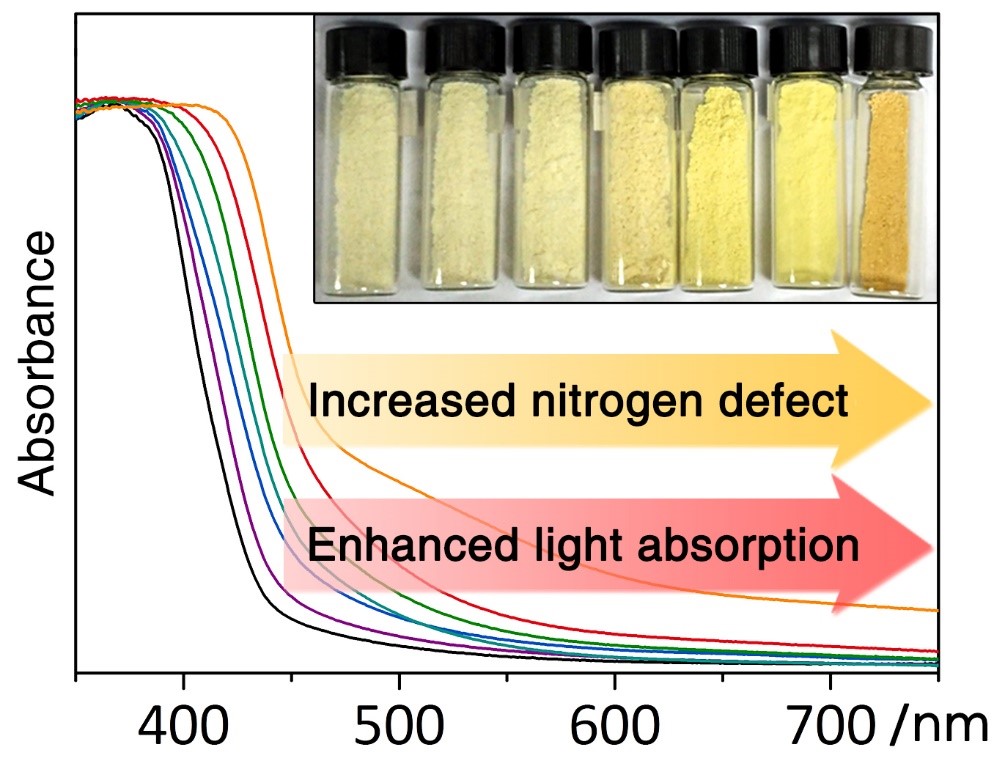To alleviate the increasingly serious energy crisis, photocatalytic hydrogen evolution from water has been viewed as a promising future strategy along with a surge in research toward solar energy conversion. Among the many known photocatalysts, graphitic carbon nitride (g-C3N4) opened new avenues to realize high performance at a relatively low cost due to its earth-abundant, metal-free nature and unique 2D nanostructure. But the large band gap (~2.7 eV) greatly hinder its ability to fully utilize the solar spectrum.
Introducing nitrogen defects into g-C3N4 is considered to be one of the important tactics to reduce their bandgap and improve the light harvesting ability. However, the synthetic procedures often require harsh conditions and afford limited control over the type and abundance of nitrogendefect, which often result in poor light absorption improvement and sever charge recombination. Therefore, there is a difficult but important task about how to simplify the production method and realize controllable and adjustable nitrogen defect state for g-C3N4.
Recently, Tierui Zhang and co-workers from Technical Institute of Physics and Chemistry reported a newly developed alkali-assisted strategy for the preparation of nitrogen deficient g-C3N4. More importantly, the defect state can be easily controlled by adjusting the ratio of alkali and organic precursor. As more nitrogen defects introduced into the structure of g-C3N4, their absorption edge gradually red shifted, with the bandgap reduced from 2.68 eV to 2.36 eV. Deeper investigation based on NMR measurement and DFT calculation further confirmed the types of formed defects and their contribution to the changed band structure. The researcher finally arrived at the conclusion that the in-situ formed nitrogen deficiency can reduce the conduction band of g-C3N4 for better visible light absorption while maintaining good charge separation efficiency, eventually get promoted photocatalytic hydrogen evolution performance.
Relevant research work was published in Advanced Materials (Adv. Mater. 2017, DOI: 10.1002/adma.201605148) and was selected as the cover of the journal to readers. Then, international famous science media Advanced Science News highlighted this research work as “Nitrogen Defects in 2D Graphitic Carbon Nitride for Water Splitting”, reported that the findings have great value on the controlled synthesis of g-C3N4 and will also shed light on the research toward the defect structure induced light absorption and charge transfer processes.
(http://onlinelibrary.wiley.com/doi/10.1002/adma.201605148/full)

Nitrogen defect induced visible light absorption enhancement of g-C3N4
NEWS